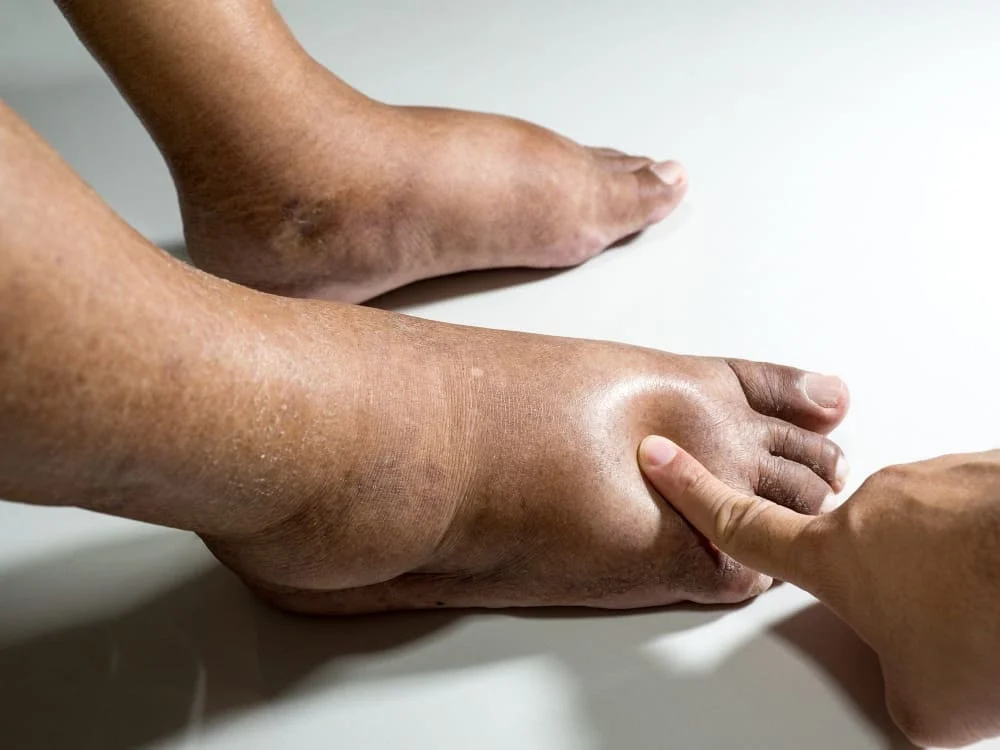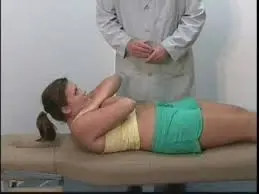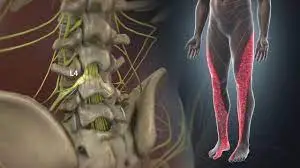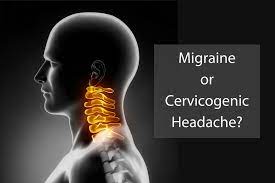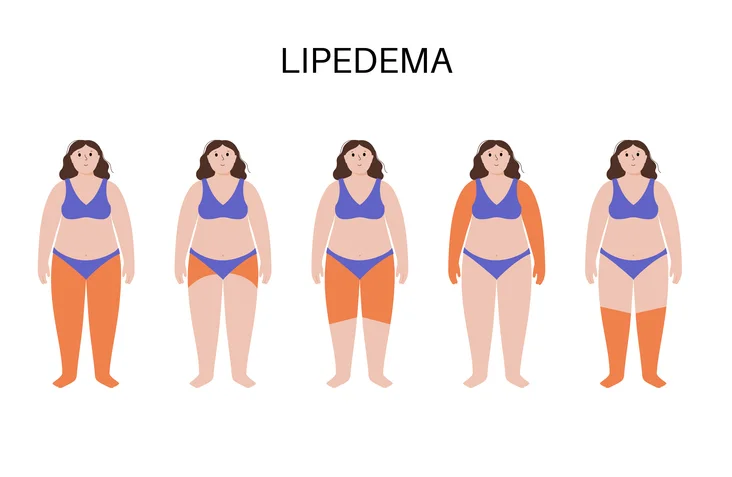Leg Swelling
Table of Contents
Definition
Leg swelling can happen in any part of the legs, involving the feet, ankles, calves, and thighs. Leg swelling can result either from fluid collection (fluid retention) or from inflammation in injured or diseased tissues or joints.
Many of the causes of leg swelling, such as trauma or prolonged standing or sitting, are common, easily described, and have no reason for concern. Sometimes leg swelling can suggest a more serious disorder, such as heart disease or a blood clot.
Seek medical care right away if your legs swell for no visible reason, mostly if you have unexpected leg pain, problems breathing, chest pain, or other warning signs of either a cardiac issue or a blood clot in your lungs.
Sign and Symptoms of Leg Swelling
If you discover it difficult to put on or take off your shoes or socks, it could be a hint that something is amiss. Or if you find that it’s more complicated than usual to bend at your ankles, swelling could be the suspect.
Other signs of swollen legs could involve:
- When you take off your socks or pant legs, indentations are left on your skin.
- Legs or feet that feel bulky, numb, or itchy.
- Skin that looks puffy, stretched, or shiny.
- Skin that feels tight or painful.
Causes of Leg Swelling
Many factors — varying greatly in severity — can create leg swelling. Your legs swell for two big reasons:
- Fluid collection (edema): It occurs when the tissues or blood vessels in your legs hold more fluid than they should. This can occur if you simply spend a long day on your feet or sit for too long. But it could also be a sign that you’re overweight don’t get enough exercise, or of more serious medical conditions.
- Inflammation: It occurs when the tissues in your legs become irritated and swollen. It’s a natural response if you break a bone or tear a tendon or ligament, but it also could be a sign of a more serious inflammatory illness, like arthritis.
Things That Cause Fluid collect
Several things can direct to extra fluid, or edema, in one leg or both:
Congestive heart failure
This occurs when your heart is too weak to pump all the blood your body requires. It leads to fluid collection, especially in your legs. Other signs of congestive heart failure:
- Shortness of breath or difficulty breathing when active or lying down.
- Tiredness.
Vein issues
Deep vein thrombosis (DVT) and thrombophlebitis: If you have DVT, a blood clot in a vein in your leg is the cause. It might separate and travel to your lungs. When that occurs, it’s called a pulmonary embolism, and it could be life-threatening.
In thrombophlebitis, also called superficial thrombophlebitis, clots form closer to the surface of the skin and aren’t possible to break off.
One of the first signs of DVT or thrombophlebitis is one swollen leg (especially the calf), as blood pools in the space. examine with your doctor right away if you have swelling in one leg or any of these other symptoms:
- Leg pain, tenderness, or cramping.
- Skin that’s stained red or blue.
- Skin that feels warm.
Varicose veins and chronic venous deficiency: You make these conditions when the valves inside your leg veins don’t keep the blood flowing up toward your heart. Instead, blood backs up and collects in pools, producing bluish clusters of varicose veins on your skin. Sometimes, they can make your legs swell. Some other symptoms might involve:
- Long time sitting or standing for an after pain.
- Changes in skin color– you might see a cluster of red or purple veins, or the skin on your lower legs might look brown.
- Dry, irritated, cracked skin.
- Sores.
- Achy legs.
- Kidney problems.
Long-term kidney disease occurs when your kidneys don’t work the way they should. Instead of filtering water and waste material from your blood, fluid gathers in your body, which creates swelling in your arms and legs.
You could also notice symptoms like these:
- Fatigue.
- Shortness of breath.
- Nausea.
- Too much thirst.
- Bruising and bleeding.
Acute kidney failure
when your kidneys suddenly stop working — can also produce swollen legs, ankles, and feet. But it usually is when you’re hospitalized with other matters.
Medications
Sometimes, swelling could be an unwelcome side effect of prescription drugs. The medications most likely to produce swollen legs involve:
Heart medicines called calcium channel blockers:
- Amlodipine (Norvasc).
- Nifedipine.
- Nonsteroidal anti-inflammatory drugs (NSAIDs), like:
- Aspirin.
- Celecoxib (Celebrex).
- Ibuprofen.
- Naproxen.
- Certain diabetes drugs, involve Actos and Avandia.
- Hormone medications containing estrogen or progesterone.
- Some antidepressants.
Pregnancy
By the third trimester, your growing baby places pressure on the veins in your legs. This slows the circulation of your blood and causes fluid to collect up. The result: mild swelling.
If you notice these other symptoms as well, let your doctor realize because it might mean you have a serious condition called preeclampsia:
- Severe swelling, especially around your eyes.
- Bad headache.
- Vision alterations such as sensitivity to light or blurriness.
If you have swollen legs and a shortening of breath during the last trimester or soon after delivery, talk to your doctor about terms called peripartum cardiomyopathy, a type of heart failure connected to pregnancy.
Learn more about edema and other pregnant discomforts.
Things That Cause Inflammation
If fluid collection isn’t to criticize for your swollen legs, it could be inflammation. Common causes involve:
Arthritis and other joint problems
The following illnesses and disorders might cause swelling in your legs:
- Gout: A sudden, painful attack created by uric acid crystals in your joints that usually follows drinking heavily or eating rich foods.
- Knee bursitis: Inflammation in a bursa, a fluid-filled sac that acts as a cushion that connects bone and muscle, skin, or tendon.
- Osteoarthritis: The wear and tear type of arthritis that destroys cartilage.
- Rheumatoid arthritis: A condition where your immune system attacks tissues in your joints.
Infections, strains, sprains, and broken bones
If you twist your ankle or break a bone, you’ll likely cause some swelling. It’s your body’s natural response to the injury. It moves fluid and white blood cells into the area and frees chemicals that assist you in healing.
Some of the most common injuries are:
Achilles tendon rupture: This largest tendon is your body’s. It relates your calf muscles to your heel bone. It’s what assists you in walking, running, and jumping. If it tears, you might hear a pop and then realize a sharp pain in the back of your ankle and lower leg.
Anterior cruciate ligament (ACL) tear: Your ACL runs diagonally across the front of your knee and holds the bones of your lower leg in position. When it tears, you’ll hear a pop, and your knee could give out. It’ll also be painful and swollen.
Cellulitis: This serious infection occurs when bacteria like streptococcus and staphylococcus make in through a crack in your skin. It’s most usual in your lower leg. Other symptoms involve:
- A red area of skin that makes it bigger.
- Tenderness.
- Pain.
- Warmth.
- Fever.
- Red spots.
- Blisters.
- Dimpled skin.
Cellulitis can transmit through your body quickly.
- A fever.
- A red, swollen, tender rash that changes quickly.
Show your doctor as soon as you can (the same day is best) if you have:
A swollen, red, tender, developing rash but no fever.
Infection or wound: Anytime you make a cut, scrape, or more serious wound, your body rushes fluid and white blood cells to the area. That creates swelling. If it lasts longer than 2-3 weeks, show a doctor.
If the wound becomes infected, you could have more swelling. Swelling is normal for a few days. It should peak around the second day and start to develop. If you have diabetes or another condition that affects your immune system, show your doctor.
Treatment of Leg Swelling
The RICE method is the most generally used treatment for foot or ankle problems. RICE translates as:
- Rest: Resting the affected ankle assists in preventing further damage.
- Ice: Applying ice or an ice pack wrapped in a towel assists in numbing the pain and reducing swelling. Apply it for 15–20 minutes at a time at a minimum of three times a day.
- Compression: Wearing a compression bandage assists in limiting swelling.
- Elevation: Keep your legs raised above the level of your heart for 30 minutes, three or four times per day, so that gravity can assist in moving fluids out and toward the rest of your body.
You might also add a “P” at the opening of the acronym, for protection (making it P.R.I.C.E.). This is important if infection, injury, or surgery is the create of your painful swelling. In this case, the first aim is to protect against further damage by staying off your feet as much as possible until your symptoms become better. It might also mean using a brace or cover to keep your legs from moving as much.
Take over-the-counter medicines
You can get several kinds of medications at your local pharmacy or grocery store that can help your legs get some relief. Nonsteroidal anti-inflammatory drugs (NSAIDs) such as ibuprofen or naproxen may assist ease swelling and pain from inflammation. Acetaminophen might also fight pain.
Some doctors say magnesium is a good mineral to add to your diet to assist with painful swelling. Always check with your doctor before taking any new supplements since some could mediate with medications.
Stay hydrated
It might not seem logical, but drinking more water will actually assist in getting rid of the excess water that creates swelling in your body. On the other hand, when you do not acquire enough water on a regular basis, your body will want to hold more to make up for it. purpose for 8 ounces every 2 hours. Also, try to limit the quantity of salt and carbohydrates you eat during the day.
Take a salt bath
Soak your legs for 15 to 20 minutes in lukewarm water with Epsom salts, which assist in relaxing muscles and ease swelling. If you don’t have a bathtub, try to get a bucket big enough to fit at least one leg at a time, with the water covering your legs up to your knees.
Try massage
Even without instruments or the ability to see a massage professional, you can perform massage on yourself at home. Your legs should be rubbed or stroked upward, toward your heart. Verify that the pressure is firm but not painful. This can assist in moving excess fluid out of that area.
Get moving
Sitting or standing in one place for too long can produce painful swelling. Get up and stretch as frequently as you can during the day. Focus on extending your knees as well as flexing your ankles to assist with blood circulation. This may assist in pumping extra fluid away from your legs and back toward your heart. If you have joint problems, try swimming; this exercise lets your body move without having to bear weight and can also relieve your skin.
Home Care for Leg Swelling
Some tips that could assist in reducing swelling:
- Position your legs on pillows to raise them above your heart while lying down.
- Exercise your legs. This assists in pumping fluid from your legs back to your heart.
- Follow a low-salt diet, which could reduce fluid collection and swelling.
- Wear assist stockings.
- When traveling, take breaks frequently to stand up and move around.
- Don’t wear tight clothing or garters around your thighs.
- Lose weight if you require to.
Never stop taking any medicines you think could be causing swelling without first talking to your healthcare distributor.
When to Contact a Medical Professional?
- You feel short of breath.
- You have chest pain, mostly if it feels like pressure or tightness.
Contact your provider right away if:
- You have heart disease or kidney disease and the swelling makes worse.
- You have a history of liver infection and now have swelling in your legs or abdomen.
- Your swollen leg or foot feels heated or red to the touch.
- You have a fever.
- You are pregnant and have more than just mild swelling or a sudden rise in swelling.
- You have new or increased swelling in only one leg.
Also, contact your provider if self-care measures do not assist or if swelling makes it worse.
How to Prevent Leg Swelling?
In some cases, self-care strategies can support prevent, or relieve swelling in the legs and ankles. These include:
- frequently checking the feet for bruises, cuts, and scratches, especially for people with diabetes.
- getting regular exercise.
- having a healthy diet that improves heart, kidney, and liver health.
- avoiding contact sports that can hurt the legs and ankles.
Summary
Swelling in the legs and ankles could be normal in some cases, but if it is sudden, unexplained, or advised by additional symptoms, contact a healthcare professional. Some health matters that result in this swelling could be life-threatening without treatment.
It is not always possible to avoid swelling in the legs and ankles. However, exercising regularly, having a healthy diet, and protecting the legs from injuries can support.
FAQs
When should I worry about leg swelling?
Also, seek immediate care if your leg swelling: Occurs suddenly and for no visible reason. Is associated with a physical injury, such as a fall, a sports injury, or a car accident. Happen in one leg and is painful, or is accompanied by cool, pale skin.
Do swollen legs mean heart failure?
Swelling in the legs and ankles is created by fluid accumulation in the body, which could be a sign of worsening heart failure. You can see that your shoes are tighter than normal if swelling in this area is increasing.
What principal factor causes leg swelling?
Leg swelling related to fluid collection. Peripheral edema, which results from fluid retention in the tissues of the legs, causes leg swelling. It could be caused by an issue with the venous circulation system, the lymphatic system, or the kidneys.
What are the side effects of leg swelling?
If left untreated, edema can cause:
Swelling makes it more and more painful.
Difficulty walking.
Stiffness.
Stretched skin, which can itch.
Raised risk of infection in the swollen area.
Injure between layers of tissue.
Less blood flow.
Less capacity for the arteries, veins, joints, and muscles to stretch.
Is swelling harmful?
Swelling is a normal response of the body to an injury. The body’s response to swelling might become excessive at times. When this happens it can actually start to cause more harm than good.
Does leg swelling go away?
Swelling normally goes on for a few days. In the first two days, you will experience the most swelling, and it should start to decrease by the third day. Following treatment from your healthcare provider reduces the quantity of swelling you might experience.
Is walking good for swollen feet?
She advised activities such as walking and swimming. Other recommendations involve: Increasing your overall movement, as sitting or standing in one place for too long can cause swelling. Just moving your knees and flexing your ankles could help.
When should swelling stop?
Typically, we will notice edema go down about two weeks after an injury or surgery. However, for some people, it could take months. For those who are continuing to observe edema, their therapist could suggest treatments to assist in decreasing and preventing additional swelling.
Does swelling mean damage?
As mentioned, swelling is a normal reaction to injury. With swelling, you also usually have limitations in the range of motion of the joint, tenderness to touch, and reduced strength. Swelling could be protective after injury by preventing us from applying the area to allow time for healing.
What kind of exercise is best for swollen feet?
Shifting only the feet, point your toes up towards your head, and then down away from your head. Go back and forth 30 times, finishing this exercise three times per day. For more information about what you can do to decrease swelling in the lower limbs, consult with a doctor today.
How long should ice be applied to a wound?
Ice should be applied to decrease swelling during the first two to three days following an acute injury. Heat can then be used to produce blood flow and aid the body’s natural healing process. Applying heat too soon could aggravate edema by boosting blood flow to the wound.
Should I use heat or ice?
For the first 72 hours following an injury, ice is a fantastic option since it helps to minimize swelling, which causes pain. Heat, on the other hand, assists in soothing stiff joints and relaxing muscles. However, neither option should be applied for more than 10 to 15 minutes at a time.”
How can I get my legs to stop swelling?
Some tips that could help reduce swelling: Place your legs on pillows to raise them above your heart while lying down. Movement your legs. This assists in pumping fluid from your legs back to your heart.

